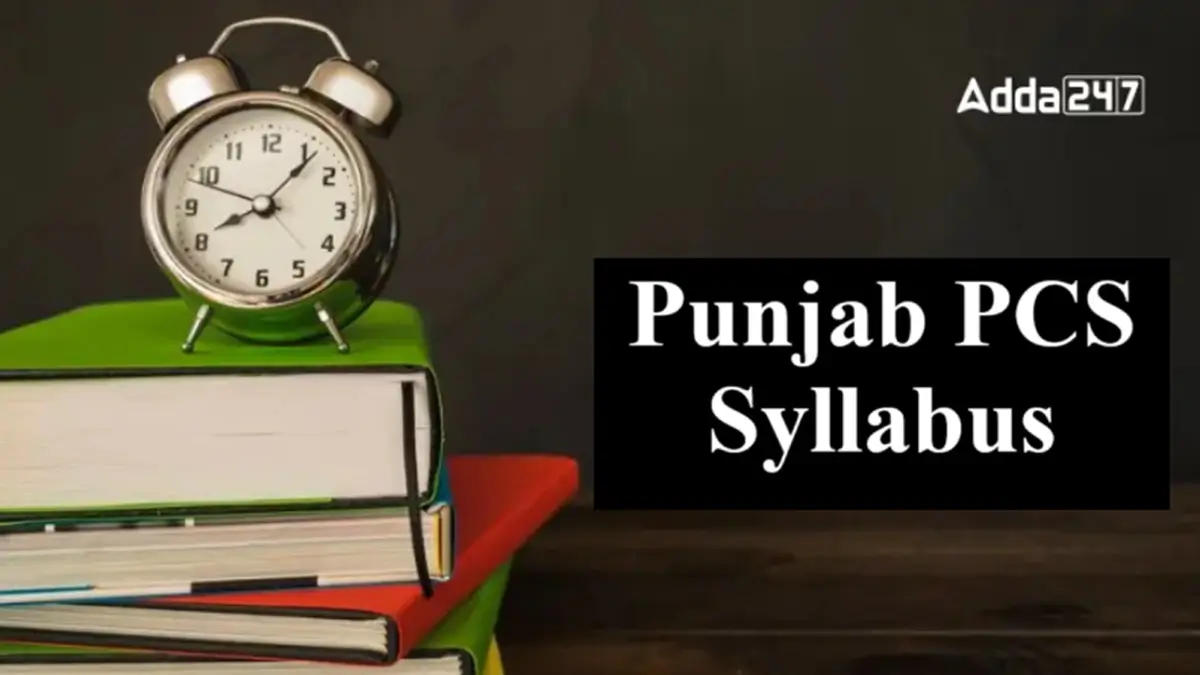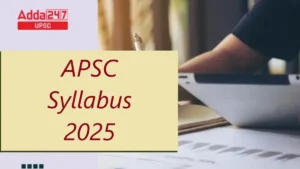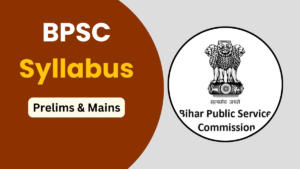Table of Contents
The Punjab Public Service Commission officially released the notification for the Punjab State Civil Services Combined Competitive Examination on its website. As the Punjab PCS Prelims Exam 2025 is expected to take place in April 2025, a thorough understanding of the Punjab PCS Syllabus 2025 is essential for candidates. In this article, we have shared a detailed, structured explanation of the syllabus. Make sure to bookmark this article for effective exam preparation.
Punjab PCS Syllabus 2025
The Punjab State Civil Services Exam is a well-reputed exam for getting civil services jobs in Punjab. Aspirants focusing on administrative roles should first review the Punjab PCS syllabus 2025 and exam structure carefully. The Preliminary Exam is expected to be held in April 2025. The prelims consist of a screening test with multiple-choice questions, and their marks are not considered for the final merit list. Candidates who pass the prelims will move on to the Mains and Interview round. The final merit list is based on the marks from the Mains and Interview.
Punjab PCS Syllabus 2025 Highlights
Going through the Punjab PCS syllabus before the examination is important for candidates as it helps them to tackle the Punjab PCS examination. The syllabus provides a clear understanding of all the topics that are covered in the examination. It helps students avoid wasting time on unnecessary subjects and focus their preparation on important areas only.
| Punjab PCS Syllabus 2025 Highlights | |
| Organization |
Punjab Public Service Commission
|
| Post Name |
Punjab State Civil Services Combined Competitive Examination
|
| Punjab PCS Notification 2025 | Released |
| Category | Syllabus |
| Job Location | Punjab |
| Official website | https://ppsc.gov.in/ |
Punjab PCS Prelims Syllabus 2025
Any candidate who wants to get brief information about the topics asked in the Punjab PCS exam can get an idea from the following syllabus shared below. They can get all the information about the Preliminary Exam Syllabus mentioned in the table below.
| Paper – I General Studies | |
| Subject | Topics |
| Everyday Science | States of matter, atom structure, carbon’s versatility, Acids, bases, salts, corrosion, soap actions. Evolution, marine and terrestrial life, human body, diseases, nutrition, prevention, health initiatives, Forces, energy, laws of motion, Archimedes’ principle, light, sound, electric current, and computers. |
| World History | Renaissance, Industrial Revolution, American, French, and Russian Revolutions, and World Wars. |
|
Environmental Studies
|
Atmosphere composition, solar system, weather, climate change, renewable energy, pollution, and biodiversity. |
| Indian Polity | Indian Constitution, amendments, Panchayati Raj, elections, regionalism, challenges to the state. |
| History Of India | Indus Valley, Aryan & Vedic age, Jainism, Buddhism, Maurya Gupta periods, Islam’s arrival, Mughals, British rule, Indian National Movement. |
| Indian Economy | Economic development since 1950, Five Year Plans, liberalization, challenges like agriculture, poverty, employment, and social sectors. |
| Geography | Population, migration, human development, land and water resources, industries, and sustainable development. |
| Punjab | Geography, rivers, demographics, history, economy, major occupations, and public finance. |
| Current Affair | National and international news. |
| Paper –II (Civil Services Aptitude Test) |
|
Punjab PCS Mains Syllabus 2025
Generally, the PPSC PCS Syllabus Mains Exam subject syllabus will cover the following topics.
| GENERAL STUDIES – I | ||
| HISTORY, GEOGRAPHY, AND SOCIETY | ||
| HISTORY |
|
|
| GEOGRAPHY | Physical Geography of the World
Industry Locations:
Geophysical Phenomena
Geography of Punjab: Physiography and Strategic Location
Agriculture and Issues
|
|
| SOCIETY | Salient Features of Indian Society and Diversity
Role of Women and Key Issues
Effects of Globalization
Ethics and Society
Human Values
Vulnerable Sections and Welfare Schemes
Social Sector Issues
|
|
| GENERAL STUDIES– II | ||
| INDIAN CONSTITUTION& POLITY, GOVERNANCE, AND INTERNATIONAL RELATIONS | ||
| INDIAN CONSTITUTION& POLITY |
|
|
| GOVERNANCE |
|
|
| INTERNATIONAL RELATIONS |
|
|
| GENERAL STUDIES– III | ||
| ECONOMY, STATISTICS, AND SECURITY ISSUES | ||
|
Indian Economy
|
|
|
|
Statistical analysis, diagrams, and graphs
|
|
|
|
Issues Related to Security
|
|
|
| GENERAL STUDIES – IV | ||
| SCIENCE & TECHNOLOGY, ENVIRONMENT, PROBLEM SOLVING & DECISION MAKING | ||
|
Science and Technology
|
|
|
|
Environment
|
|
|
|
Situations in Civil Service -Problem Solving and Decision Making
|
|
|
Punjab PCS Exam Pattern 2025
Along with the Punjab PCS Syllabus 2025, candidates need to know the Punjab PCS Exam Pattern 2025 too. This includes the main exam topics and other details. Understanding the revised PPSC Exam pattern and covered sections will help candidates do well in the exam. Scoring well in all phases, including the Preliminary Exam, Main Exam, and Interview, is key to success.
Punjab PCS Prelims Exam Pattern 2025
The Punjab PCS Mains Exam Pattern is divided into two sections: General Studies and Civil Services Aptitude Test (CSAT). The General Studies section comprises 100 questions, each carrying 2 marks, while CSAT consists of 80 questions, each carrying 2.5 marks, resulting in a total of 200 marks.
| Subjects | No of Questions | Marks for each Question | Total Marks |
| General Studies | 100 | 2 marks | 200 marks |
| Civil Services Aptitude Test(CSAT) | 80 | 2.5 marks | 200 marks |
Punjab PCS Mains Exam Pattern 2025
The Punjab PCS Mains exam has seven papers. Out of these, Punjabi and English are compulsory, each carrying 100 marks. The other papers include Essay (150 marks) and General Studies Paper I, II, III, and IV, each has 250 marks. Candidates who qualify the mains exam will move on to the interview, which is of 150 marks.
| Papers | Subject Name | Maximum Marks | Duration |
| Paper I | Punjabi (in Gurumukhi Script) Compulsory | 100 marks | 3 hours |
| Paper II | English Compulsory | 100 marks | 3 hours |
| Paper III | Essay | 150 marks | 3 hours |
| Paper IV | General Studies Paper 1 (History, Geography, and Society) | 250 marks | 3 hours |
| Paper V | General Studies Paper 2 (Indian Constitution & Polity, Governance and International Relations) | 250 marks | 3 hours |
| Paper VI | General Studies Paper 3 (Economy, Statistics, and Security Issues) | 250 marks | 3 hours |
| Paper VII | General Studies Paper 4 (Science & Technology, Environment, Problem-solving & Decision-Making) | 250 marks | 3 hours |
| Total | 1350 marks |
The candidate can enroll in the Punjab PCS Online Coaching 2025 here!
Punjab PCS Interview 2025
After going through the Punjab PCS Syllabus 2025 and the exam pattern, candidates need to prepare themselves for the PCS interview round as it holds paramount importance in the selection process of candidates. Following the successful completion of the Preliminary and Main exams, candidates advance to the interview round. From the shortlisted candidates, only three per vacancy are chosen to participate in the interview.
This round holds substantial weightage, accounting for 150 marks, and requires candidates to showcase their knowledge, communication skills, and overall suitability for the position. Attaining a minimum of 45% marks in the interview is imperative for candidates to be deemed eligible for appointment.
| Punjab PCS Related Articles | |
| Punjab PCS Salary | Punjab PCS Previous Year |
| Punjab PCS Selection Process | |




 APSC Syllabus 2025, Download Prelims And...
APSC Syllabus 2025, Download Prelims And...
 BPSC Syllabus 2025 and Exam Pattern For ...
BPSC Syllabus 2025 and Exam Pattern For ...
 UPPSC Syllabus 2025: Prelims and Mains E...
UPPSC Syllabus 2025: Prelims and Mains E...




